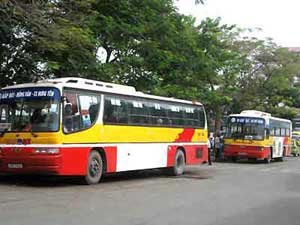
|
There are six major bus stations throughout the city, including Giap Bat, Gia Lam, My Dinh, Luong Yen, Yen Nghia and Nuoc Ngam.
However, some of these bus stations are overloaded while others draw few passengers.
For example, Giap Bat Bus Station, located in the south of the city, received several upgrades and an expansion to enable the station to handle 800 trips per day instead of 300. Despite the work, the station still failed to meet increasing demand from passengers. Overcrowding was common on holidays.
My Dinh and Giap Bat station are operating at full capacity while from passengers keeps increasing.
Meanwhile, the large Yen Nghia Bus Station, after several years of operation and hundreds of billions dong in investment, continues to draw few passengers as the station is inconvenient to reach.
According to director of Ha Noi Bus Station Management Company Nguyen Hoang Trung, there was also a lack of investment in developing the infrastructure at bus stations.
There was a proposal to upgrade bus stations to meet international standards during the 2011-15 period. However, to date, the project had not been approved.
Khuat Viet Hung, a lecturer at the Ha Noi University of Transport, said to Thoi Bao Kinh Te Viet Nam (Viet Nam Economics Time) that bus stations should be relocated to areas outside of belt road 3.
In addition, the planning of bus stations must comply with the planning of bus routes, taxi parking spaces and all other transport options.
VietNamNet/Viet Nam News